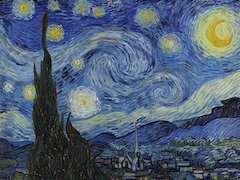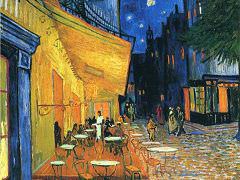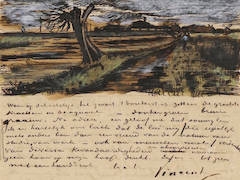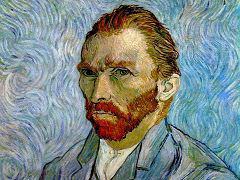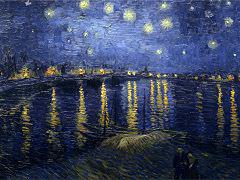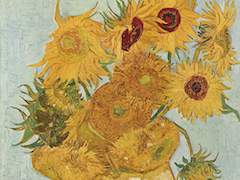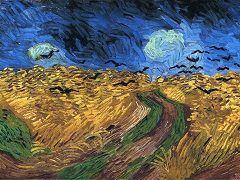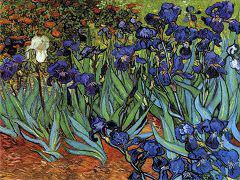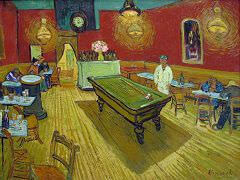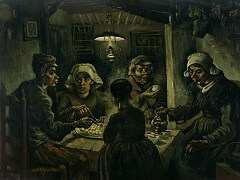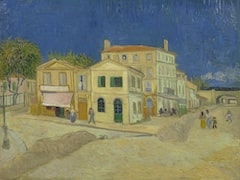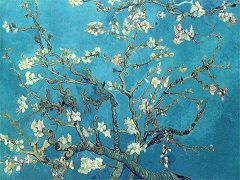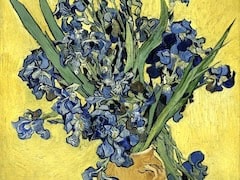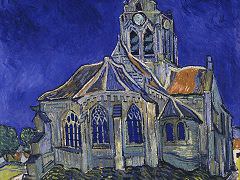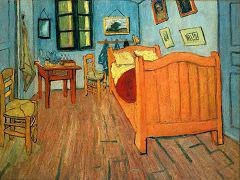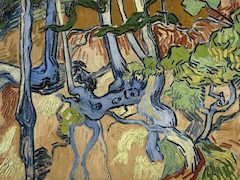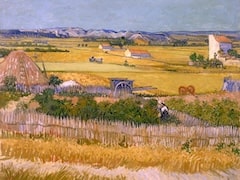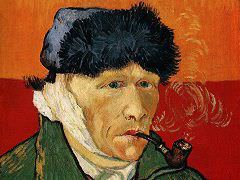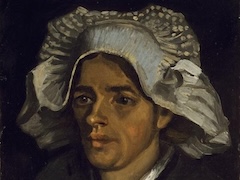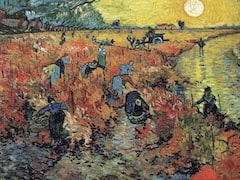Thatched Houses against a Hill, 1890 by Vincent van Gogh
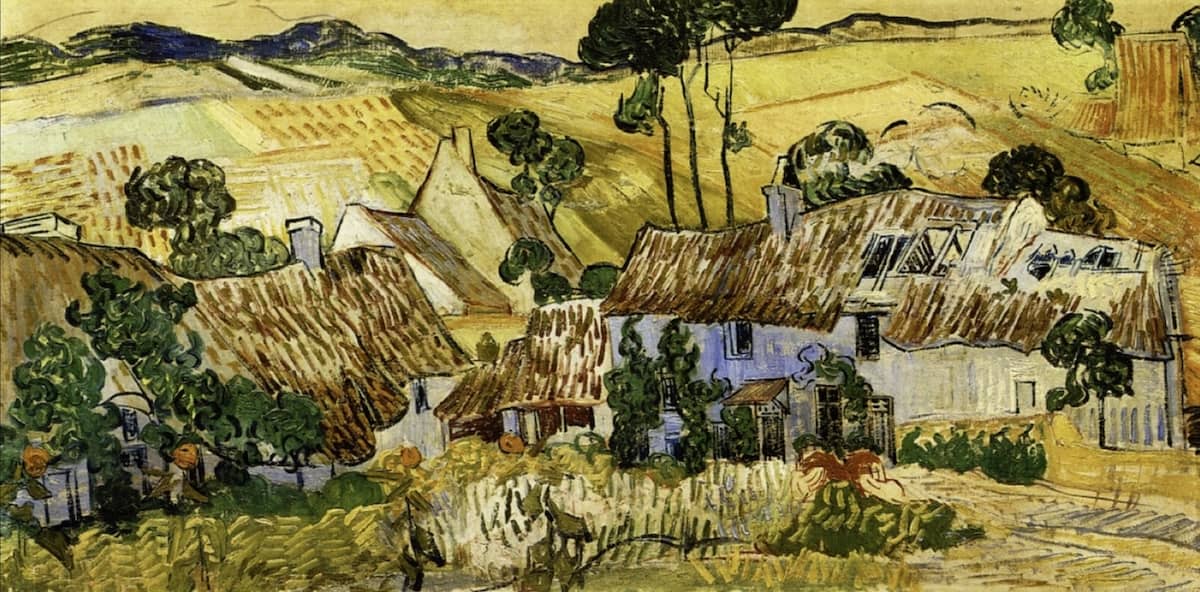
Towards the end of June 1890 Van Gogh finished five landscape canvases, including Thatched Houses against a Hill.
Both the subject matter and the landscape format are reminiscent of the work of Daubigny, although the French painter would have chosen the tide 'Twilight' or 'Evening Mood'. It seems highly likely that Van Gogh was aiming to convey such a mood. When he was in Saint-Remy he had described the landscape he saw through the bars of his window after sunset as a painting by Henri Rousseau or Daubigny 'with the expression of all the intimacy and all the intense tranquillity and majesty it possesses'. These painters added a personal, melancholy feeling to the landscape, he added, conceding, as it were, 'such emotion - that is not something I dislike'.
The motif of the canvas can also be traced back to Daubigny and was a subject Van Gogh already knew well in Holland. In 1882, in The Hague, Van Gogh visited an exhibition of modern French art from private collections in the Netherlands. One of the paintings he saw there was a work by Daubigny, showing 'large thatched roofs against a hillside', which held an endless fascination for Van Gogh. The houses it depicts stood in the village of Valdomois, not far to the north of Auvers, where Daubigny had spent his early childhood.

